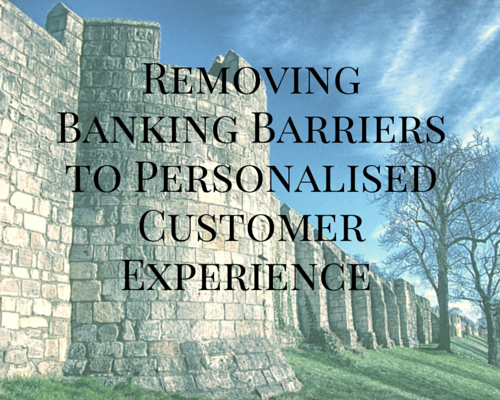Removing Banking Barriers to Personalised Customer Experience
Blog: Kofax - Smart Process automation
Historically the banking industry has taken the “inside-out” approach to customers—which  means delivery of services was based on what the bank wanted to deliver. While this has worked well for decades, there is a dramatic shift. During the past year, retail banks experienced a 30% decrease in foot traffic and an increase of 200% in mobile engagement. This statistic represents a shift to the customer into the driver’s seat. Increased competition, regulation and greater choices for the consumer means it’s now “all about them”. Established banks are now working with fintech organisations to tackle this digital disruption challenge. For banks to deliver on this personalised customer experience begins with better understanding of how customers consume services and how to deliver across multiple platforms.
means delivery of services was based on what the bank wanted to deliver. While this has worked well for decades, there is a dramatic shift. During the past year, retail banks experienced a 30% decrease in foot traffic and an increase of 200% in mobile engagement. This statistic represents a shift to the customer into the driver’s seat. Increased competition, regulation and greater choices for the consumer means it’s now “all about them”. Established banks are now working with fintech organisations to tackle this digital disruption challenge. For banks to deliver on this personalised customer experience begins with better understanding of how customers consume services and how to deliver across multiple platforms.
So what is holding retail banks back from making this change?
Perhaps the greatest barrier to delivering that great customer engagement experience is the gap between systems of engagement (the point of customer interaction, for example the banks website, email, Mobile Apps, etc.) and systems of record (the banks line of business systems, for example, the core banking system, CRM, BPM/workflow, etc.). As the rate of technology increases, so do customer expectations for a fast and seamless experience with their bank.
E-commerce sites provide the personalised experience. Customers receive offers based on their preferences (and not what the retailer prefers to sell). And in one click, the transaction is completed and the data collected from this transaction is used to further segment customer preferences. Established banks struggle further to create that customer omnichannel engagement as the gap between front office and back office continues to increase.
Decades old legacy systems simply can’t keep up with the pace.
Banks are moving as fast as they can as the front facing side but can’t keep up with back office, legacy systems. And while ideally you would want parallel processing, front and back office at the same time, you can’t wait for a legacy system to catch up. And more often than not, IT resources are stretched thin, so any automation projects are moved to the back of the list.
One of the biggest opportunities for established banks is the not so glamorous back office opportunity to transform to “straight-through processing” of transactions where workers perform manual repetitive tasks like updating multiple systems. Robotic Process Automation or RPA is the emerging technology embraced by both IT and business groups for enterprise organisations. RPA works across different websites, portals, modern applications, legacy systems, and even desktop tools like Microsoft Excel to retrieve and deliver information. RPA utilizes “software robots” mimicking how a worker would interact with a system.
Core retail banking is about repeatable actions and processes, so robotic process automation (RPA) would help the back office “catch up” to the front office processes and connect both environments.
Dealing with opposing forces
In both the established banks and challenger banks two dynamic forces are at work. The first force is the customer, demanding simplification of banking interactions. The other force is dealing with legacy systems and increasing compliance requirements, regulations and fraud/security.
According to many industry experts, like Forrester, banks can experience productivity gains of 25-50% compounded across thousands of transactions will enable greater agility. Human interaction accounts for 2-5 errors per 100 tasks. An automated RPA solution will streamline operations, reducing manual labour overhead and increase data quality. At the same time providing improved compliance and standardisation.
RPA provides an easier way to reduce operation costs and improving banks’ agility to deliver better experience to customers by automating existing user actions, as if the checker was moving through their manual tasks. It allows you to configure software or robot to capture and interpret existing applications processing transaction. And since a solution like RPA sits on top of existing technology, it complements your legacy systems, increasing their functionality without disrupting the day-to-day business operations or creating the need for major transformational projects, costing millions and taking years to complete.
Many of the ideas shared here can be seen in Transforming the Customer Experience in Banking. You can watch this Marketforce webinar and hear from industry leaders from Lloyds Banking Group and new challengers such as CivilisedBank and Mondo Bank.
Get more information about Robotic Process Automation.
Leave a Comment
You must be logged in to post a comment.







